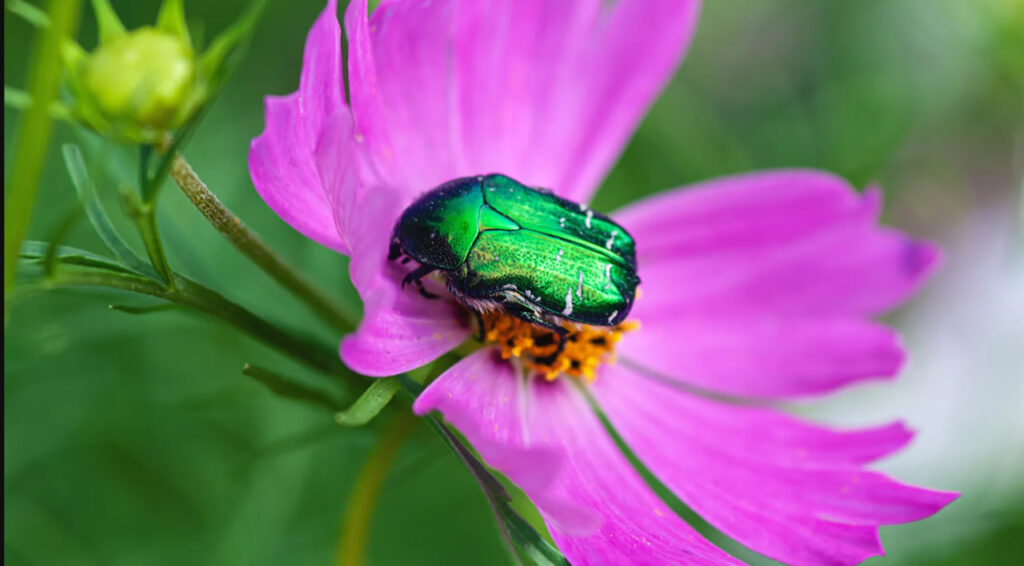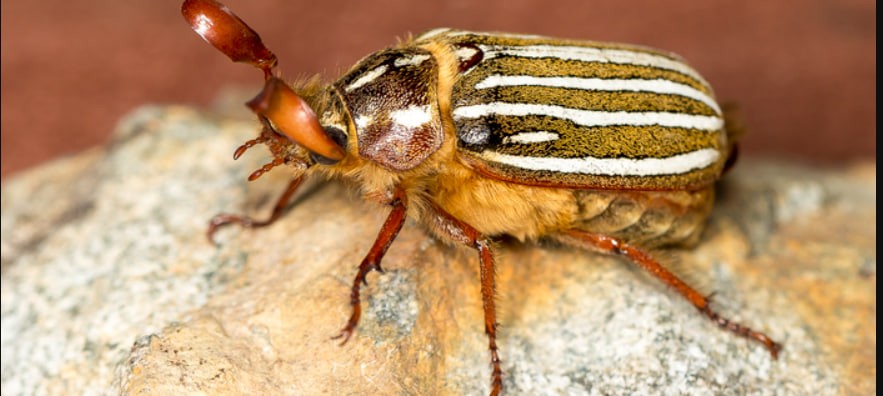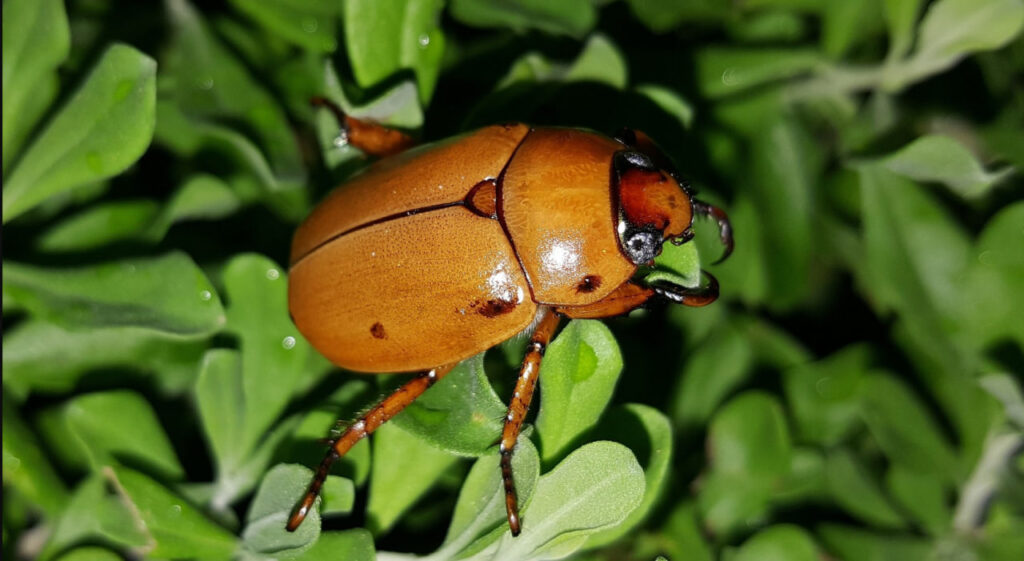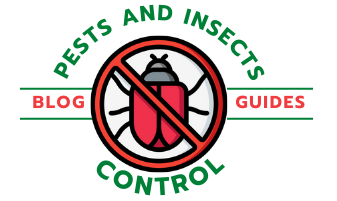As the summer sun rises, so do our little green companions—June bugs! Although in vast numbers they can seem to be everywhere you turn, these critters usually aren’t looking for trouble. Do they bite? Not as adults, but their larvae may try if threatened. So while it’s best not to startle them or get too close, don’t worry about your safety around June bugs this season; just keep an eye out and enjoy nature at work!
Are you curious about whether June bugs pose a threat to your family or furry friends? Fear not! This guide will provide all the necessary information for understanding these beetles and how dangerous they really are. So, join us as we explore everything from safety tips to fun facts – let’s get started!
Do June bugs bite?

Vibrant and plentiful in the warmer months of summer, June bugs – or ‘green June beetles’ to some – are part of a larger Scarabaeidae family that can be found from coast-to-coast. With their mandible mouths designed for maximum leafy munching, these little green critters often come out in hordes during the month of June!
June bugs are often mistaken for being more dangerous than they actually are. Although adults rarely bite, the larvae can be quite destructive due to their large appetite and resulting behavior; kinds like a human baby trying out different new things with his/her mouth—but on trees! The good news is that this biting phase of June bug life passes quickly as soon as they become an adult.
What does a june bug bite look like?
A June bug bite is no cause for alarm! With the special ability to slip past us unnoticed, a tiny red area and slight irritation may be all that greets you after an encounter with one of these critters. But don’t let this minor discomfort fool you – beneath the skin your body has already begun fighting off whatever it was trying to do when it bit down earlier.
What to do if a june bug bites

Even though June bugs don’t usually bite, it can happen. Luckily there’s no need to worry if one does – you can easily take care of the problem in your own home with simple treatments!
- Make sure the area is cleaned with soap and water. This will stop any dirt or bacteria from getting in.
- Apply a cold compress to the area for a few minutes to reduce any swelling.
- Avoid scratching the area
If you happen to be unlucky enough to experience the bite of a June bug, it’s like getting an unexpected pinch – sharp and precise. Don’t fret too much though; some simple self-care should fix things up in no time! Cleanliness is key for avoiding infection at the broken skin site so try your best not to itch those immediate urges away.
Are june bugs harmful to humans?
June bugs are not harmful to humans. At most, they are annoying insects.
June bugs can be quite the pests! Though they may seem harmless, these little creatures—especially when startled or threatened by getting too close to humans and their belongings—can let out a startling hiss. This sound may make anyone with arachnophobia jump sky-high; even for those who aren’t so scared of bugs, it’s an unnerving noise that no one ever wants to hear up close.
June bugs may feel like a prickly flurry while they prance across your skin. The tiny spikes on their legs don’t cause harm, but provide an unsettling sensation.
June bugs may seem a bit scary when they are confused – zipping around and flailing wildly. However, it’s nothing to be alarmed about; their frantic behaviour is simply an instinctive reaction caused by confusion or disorientation. With some time and understanding, the June bug will soon calm down and fly away peacefully!
Can june bugs pinch you?
June bugs might look intimidating with their creepy-crawly features, but don’t worry – they’re not out to get you! Rather than using their pincers for attacking people like some insects do, June bugs have adapted the ability to pinch leaves and other plants in order to munch away. And if it feels like one is actually pinching your skin during its visit? That’s probably just a grip from tiny hairs on its legs that aren’t strong enough break through our layers of protective armor.
Do june bugs sting?

If a June bug gives you an unexpected visit, there’s no need to worry – their bodies are completely harmless. Even if they land on your skin, these bugs can’t sting or inject any venom into you. So go ahead and make friends with this summer insect without fear of unpleasant surprises!
Why do june bugs hiss?
With a spine-tingling hiss, June bugs might make us jump out of our skin in surprise! But don’t worry, this is merely an instinctive defense tactic – there’s no real danger here. Even though the noise can be startlingly loud when disturbed or frightened, we have nothing to fear from these harmless critters.
The noise isn’t made from their mouths but actually from their wings. They push the air out between their wings and as the air is forced out it makes a noise.
Do june bugs attack you?
If you take a walk in the summer, be sure to look out for June bugs! Often hundreds of these clumsy beetles will rise from their hiding spots and fill up the sky. In reality, they aren’t trying to attack – but with their erratic flight patterns it can often feel like an unwelcome invasion as they bump into your body and hair along their haphazard journey around you.
With the beginning of June come swarms of these big, noisy bugs. At night they love to linger around lights and can even accidentally get stuck in your clothes or hair! Don’t worry though – while their loud hissing may seem like a full on assault, all the June bug is trying to do it tell you something’s blocking its path so it can reach what it wants – be that another insect, food or light.
Are June bugs dangerous to pets?
While your beloved pet may be ready to pounce, June bugs aren’t looking for a prehistoric showdown. Despite the hissing and squealing they make when disturbed by our furry friends, these insects are just trying to get away – not take a chunk out of Fido’s tail.
June bugs and cats
Cats are hunters and are likely to chase June bugs around your yard.
No worries when June bugs come around – your kitty can rest assured they won’t be harmed! If anything, they might even enjoy the smorgasbord of these harmless insects. All their crunchy goodness has no ill effect on cats, so let them feast away without fear!
June bugs and dogs
Dog may be tempted to try their paw at catching a June bug or two! These small june bugs fly insects are not dangerous and won’t bite, pinch or sting – the worst they’ll do is hiss. But if your pup can sneak up on them in large swarms then maybe even dog could become an expert June bug catcher!
Trying to keep your beloved pup out of trouble? You’ll be happy to know that June bugs aren’t a health hazard, but overindulging can still cause some minor tummy troubles. Be on alert for dehydration symptoms in case they have an unfortunate reaction – and you should be good
Are june bugs poisonous?
June bugs may be a nuisance, but at least their stinger-free bodies provide some peace of mind for humans and animals alike.
Yet June bugs can be poisonous if they’ve come into contact with pesticides or insecticides.
Gardeners can use pesticides to protect their plants and crops from hungry June bugs. The chemicals remain in the soil, lingering around – ready to dissuade these invaders attempting a snack.
June bugs may have built up an immunity to certain insecticides, but these chemicals can still be stored in their bodies and transferred through food. While larger animals (like our beloved pets) will just experience some mild digestive woes from ingesting June bug poisons, it could prove lethal for smaller wild birds! A devastatingly high number of avian deaths every year are caused by hazardous levels of pesticides ingested with unsuspecting meals.
Should i kill june bugs?
June bugs are often seen as an unwelcome sight in yards across the country. But should they be eliminated, or accepted and embraced? Weighing both sides of this argument can help you decide if June bugs belong there for good. On one hand, it might make sense to remove them from your yard due to potential damages caused by their presence; on the other hand though, learning more about these creatures may reveal why leaving them be is actually best for everyone involved.
No don’t kill them
June bugs have a really important part to play in your yard ecosystem.
With June bugs, you have the chance to bring a little wildness into your backyard. Not only are they an excellent source of protein for young birds who need it most – helping local species thrive and survive- but also attract them in with their great taste! However, one should be mindful when using insecticides as these chemicals can accumulate internally and cause harm even if consumed secondhand by animals or birds that eat the June Bugs moments after application.
In overall, try being creative about how you control pests on your property – pick out natural ways instead of killing off entire colonies in order not to disturb wildlife nutrition sources.
Let nature take its course with the June bug population in your yard – trust that creatures of the sky and land will keep it under control. As summer winds down, so too do these pesky pests as they slowly reduce their numbers until fall arrives.
Yes do kill them
Swarms of June bugs can be a huge nuisance, especially if you’re a keen gardener.
If you’re an avid gardener, be warned: June bug grubs are ravenous eaters and can devastate your grass, crops and flowers. These hungry larvae stay underground for two years while they feast on the roots of roses or any other plants in their path. Unfortunately when adult June bugs finally emerge from the soil, it’s usually too late – much of your hard work has already been destroyed.
Then the more adult June bugs that are around, the more eggs they will lay underground.
If you’re looking for a way to tackle those pesky June bugs, natural methods are the best option. Not only do they keep your local wildlife safe from any harmful chemical insecticides, but by attracting birds and other bug-eating creatures it can help create an ideal balance in your yard’s ecosystem.
Animals and bird that eat June bugs are:
- Cardinals
- Blue jays
- Mockingbirds
- Owls
- Crows
- Raccoons
- Opossum
- Toads
- Spiders
When it comes to battling large-scale infestations, a powerful biological spray may be your best bet. This top Amazon pick is safe for humans and nature alike – yet keep in mind that exterminating pests could have larger ramifications on the local environment. After all, they provide an important protein source for our feathered friends.
Final thoughts
Now you know that June bugs can bite, however they won’t bite you or your pets.
The june bug larvae can be rather feisty with their voracious appetite leading them to chew through anything that could potentially feed their hunger. Despite this, there is no need for concern as these critters aren’t quite coordinated enough in order to do any real harm; the most you’ll get from one of these insects is a hiss!
Tired of June bugs swarming around your home? Not to worry – they won’t harm your pets if eaten, but it’s still a good idea to monitor them afterward. You can also attract some feathered friends who will help keep the population down – making sure these pesky insects don’t take over! Just be mindful when using natural sprays so as not to disrupt any local bird and wildlife that depend on their crunchy exoskeletons for food.
Read more: Pros and cons of termite bait stations

